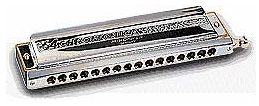
While in high school and college, I spent quite a bit of time sitting in the trombone section of the jazz band, honking on the bass trombone. It was quite satisfying to blow low tones and anchor the brass section. And I had several opportunities to play in unison with my brother low-register specialist, the baritone saxophonist. This is how I fell in love with the bari sax.
A good bari player can really throw down a bass line. He/she can make it pop in the low register, rumble and growl, adding bottom to jazz, funk and rock music. A virtuoso baritone saxophonist can blow like Coltrane and Bird, but in the bass tone zone. There is a soulfullness to the sound of a bari - gruff, yet warm and it grabs me every damn time I hear it. And bari sax players tend to be a tad on the geeky side, which I really like. They aren't the movie stars of the music world.
I have a list of bari players that just knock me out -
- Gerry Mulligan: Gerry left us in 1996, and he was one of the greatest bari players in history. His tone was different - lighter and cooler than the typical rollicking baritone sax sound. He was bari guy on the Miles Davis "Birth of Cool" record. He played with Duke, Monk, Louis Armstrong, Chet Baker and Dave Brubeck. He put the bari in the jazz spotlight. Here is a clip of Gerry playing a wonderful old standard, "Satin Doll."
- Harry Carney: Mr. Carney was probably the first major performer on the baritone sax. He played Conn saxophones with a very large-chambered mouthpiece, which produced a huge, rich tone that most bari players try to replicate to this day. Carney ran away from home at the age of 17 to join Duke Ellington's orchestra! Wow! And he was one of the first practicioners of "circular breathing," a technique that allows a hornplayer to hold a note indefinitely. Check out this youtube clip and you will hear Harry's artistry and experience the incredible tension and release that the cicular breathing technique can create.
- Pepper Adams: Pepper was the "anti-Mulligan." Gerry was light and cool; Pepper was sharp and hot. They used to call him "the Knife" in honor of his attack and cutting tone. Pepper was a "hard bopper" and recorded with Mingus, Coltrane, Donald Byrd and a long list of other greats. He died of lung cancer at the age of 56 (which happens to be my age....). He played with a joyous ferocity that few musicians have ever attained. Here is a clip - wonderful stuff!
- Ronnie Cuber: This guy is still alive and kicking ass! He can do it all - harp bop, soul, funk and every damn thing. In addition to playing with stars like Joey DeFrancesco (Hammond B3 organ superstar), Randy Brecker, Maynard Ferguson, and Lee Konitz, Ronnie has also played with a bunch of pop stars seeking that magical bari sound, including Paul Simon and Chaka Khan. I love this guy - he looks like a paunchy accountant, but he is one of the funkiest horn men alive today! Check out this clip...
- Stephen (the Funky Doctor) Kupka: Doc has anchored the Tower of Power horn section for almost four decades! Imagine that! He introduced an entire generation to the robust bass honk af a well-played bari sax. He was a soulful, nerdy white kid back inthe 1970's; he is a distinguished-looking senior playa now. I still can't get enough of this guy - he has anchored TOP and defined its sound since its inception. Doc is a section player - not a soloist. And that is cool - here he is with TOP on the Letterman show some time back.
- Dana Colley: Dana is a bari guy that nearly achieved rock superstardom. He was a member of the odd-ball power trio, Morphine, in the 1989-1999 period. The instrumentation was electric bass, drums and baritone saxophone. This band was led and driven by the late, great Mark Sandman (bass and vocals); Mark died of a heart attack on stage in 1999. Dana played some amazing bari and opened a new frontier of the baritone sax as a frontline voice in a rock/pop context. The music was incedible, rumbling with funky darkness down in the bass register. Even Sandman's voice was a baritone-bass instrument. Here is a particularly mesmerizing tune by Morphine, recorded in a small club - wicked!!!
I could add many more names to this list. Here in Chicago, we have a few local Baritone Sax Studs - Bob Centano is the guy that leaps to mind immediately. Bob plays the entire range of woodwind instruments, but seems to spend most of his time on the bari. He is no spring chicken - well into his retirement years. Bob worked in the Federal courts - clerking for Federal judges was his "day job" for many years. He is back to being a full-time musician in retirement. He also leads a big band around the Chicago area, and it is an excellent ensemble. Bob's playing is deeply soulful and full of surprises.
I am always amazed when a talented musican plays a big, intimidating instrument like the baritone sax and generates such marvelous sounds. I wish I could play that damned bari sax!





